Boston Tea Party
Discover how a protest over tea sparked the American Revolution and changed history forever!
What Was the Boston Tea Party?
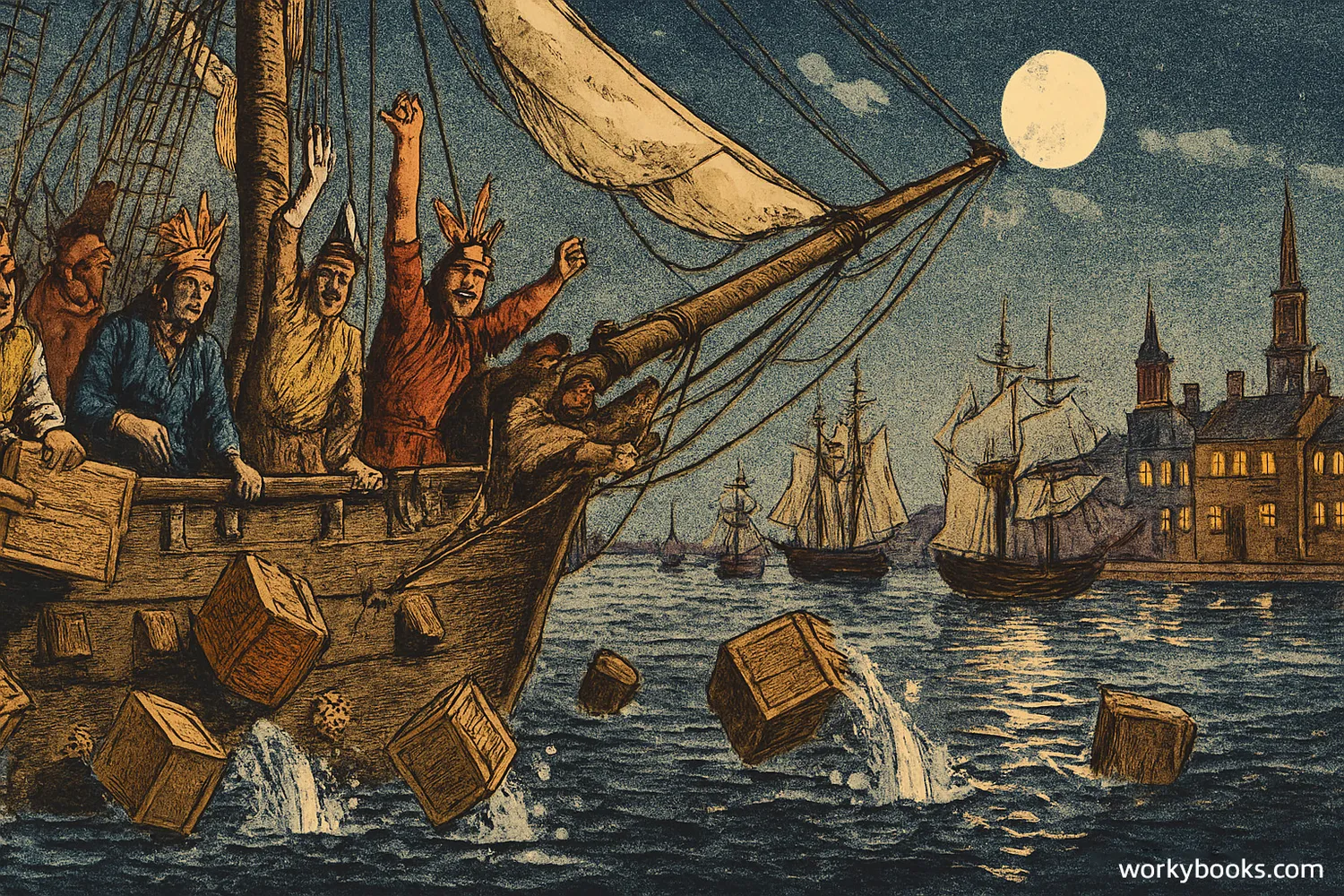
The Boston Tea Party was a political protest that happened on December 16, 1773. American colonists, angry at Britain for imposing "taxation without representation," dumped 342 chests of British tea into the Boston Harbor. This event was a key moment leading up to the American Revolution.
The protest was not really about the price of tea, but about the principle that Britain could tax the colonies without giving them any say in Parliament. The colonists used the slogan "No taxation without representation" to express their frustration.
Did You Know?
The Boston Tea Party wasn't called by that name until many years later! At the time, it was simply known as "the destruction of the tea."
The Tea Act of 1773
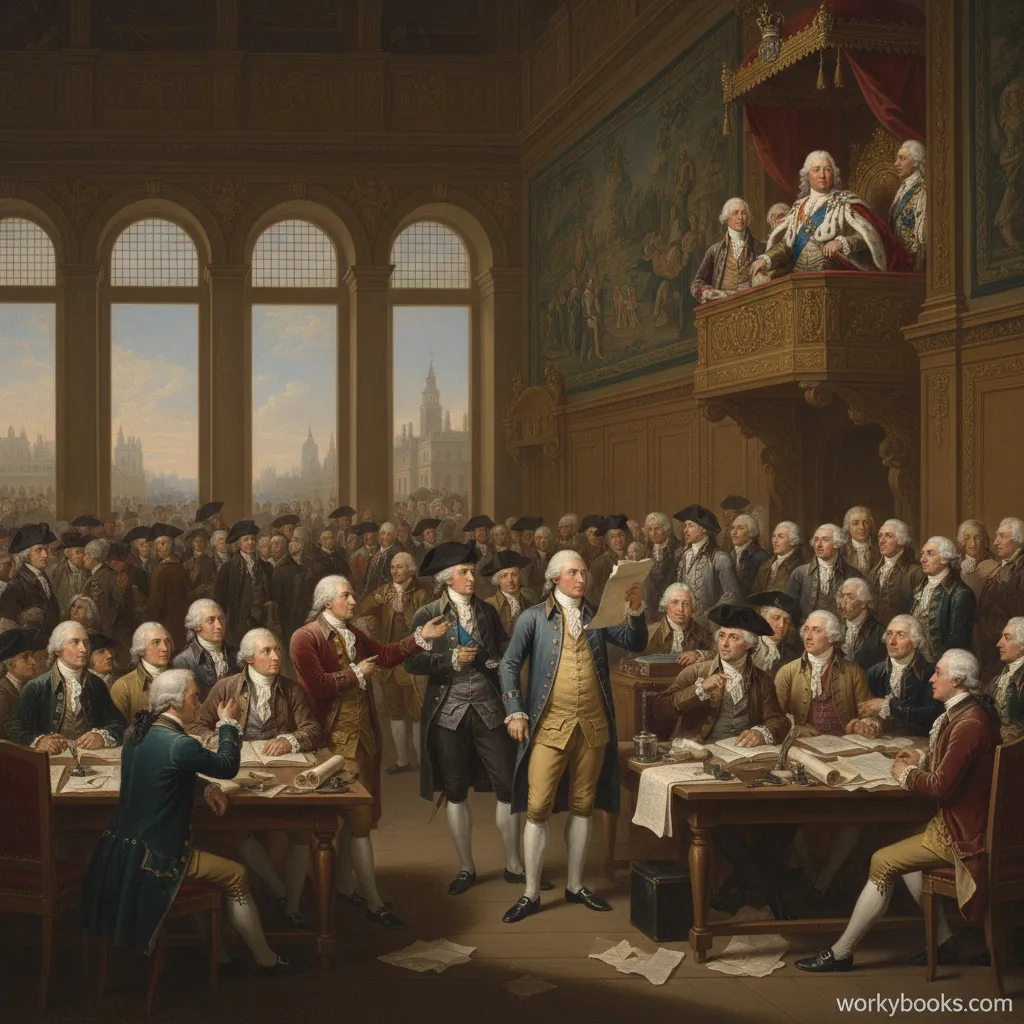
The Tea Act was passed by the British Parliament in May 1773. It was designed to help the struggling British East India Company by allowing them to sell tea directly to the American colonies without paying taxes. This made their tea cheaper than tea sold by colonial merchants.
Even though the Tea Act actually lowered the price of tea, colonists were angry because it gave the British East India Company a monopoly. They believed this was another example of Britain trying to control them and take away their rights.
British East India Company
The company had millions of pounds of unsold tea and was facing bankruptcy
Tea Act Passed
Parliament passed the Tea Act to help the company sell tea in America
Colonial Anger
Colonists saw this as another attempt to tax them without representation
The Sons of Liberty
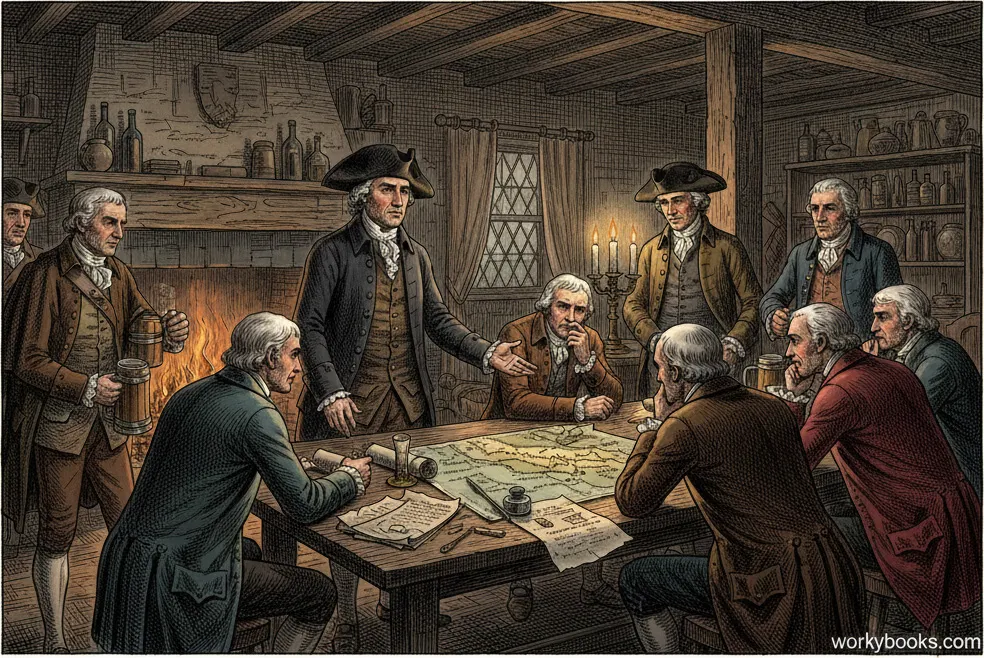
The Sons of Liberty were a secret organization of American colonists who opposed British rule. They were formed to protect the rights of the colonists and to fight against taxation by the British government. Famous members included Samuel Adams, John Hancock, and Paul Revere.
The Sons of Liberty organized the Boston Tea Party. They dressed as Mohawk Indians to hide their identities as they boarded the ships and dumped the tea. This disguise also symbolized that they saw themselves as "true Americans" rather than British subjects.
Key Leaders
- Samuel Adams - Political leader who helped organize the protest
- John Hancock - Wealthy merchant who funded resistance activities
- Paul Revere - Silversmith and messenger who spread news of British movements
The Boston Tea Party Event
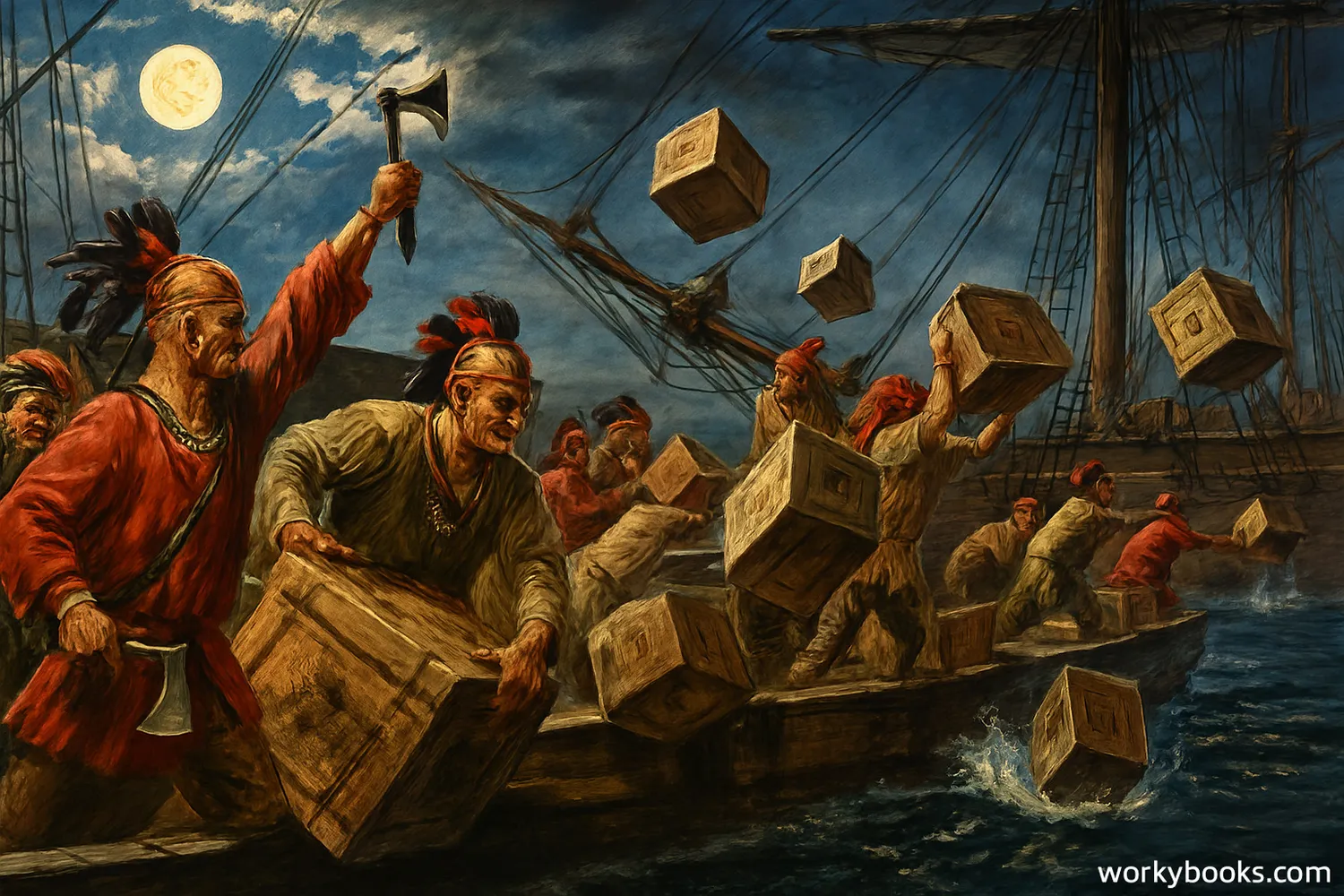
On the night of December 16, 1773, a group of 60 to 130 men, many dressed as Mohawk Indians, boarded three British ships in Boston Harbor: the Dartmouth, the Eleanor, and the Beaver. Over the course of three hours, they dumped 342 chests of tea into the water.
The protest was remarkably orderly and peaceful. No other property was damaged, and the participants even swept the decks clean before leaving the ships. The only thing destroyed was the tea, worth about $1.7 million in today's money.
Nighttime Operation
The protest happened under cover of darkness to protect participants' identities
Disguised as Natives
Colonists dressed as Mohawk Indians to symbolize their American identity
342 Chests of Tea
They destroyed 90,000 pounds of tea worth a fortune even today
The Intolerable Acts
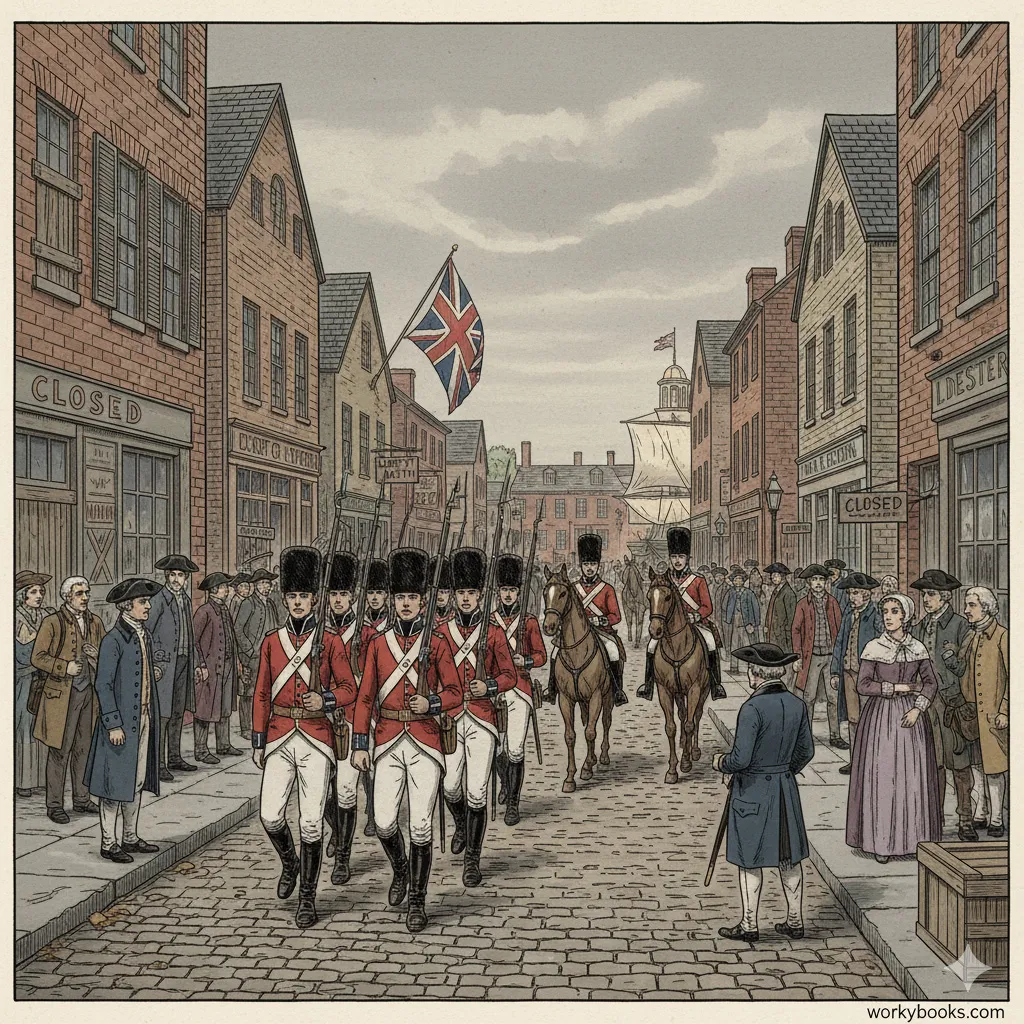
In response to the Boston Tea Party, the British Parliament passed a series of laws in 1774 that colonists called the Intolerable Acts. These laws were meant to punish Massachusetts and serve as a warning to other colonies.
King George III and Parliament were furious about the destroyed tea and wanted to make an example of Boston. The Intolerable Acts actually had the opposite effect - they united the colonies against Britain and moved them closer to revolution.
Boston Port Act
Closed Boston Harbor until the destroyed tea was paid for
Massachusetts Government Act
Took away Massachusetts' right to self-government
Administration of Justice Act
Allowed British officials to be tried in Britain instead of the colonies
Quartering Act
Required colonists to house British soldiers in their homes
Impact on the American Revolution
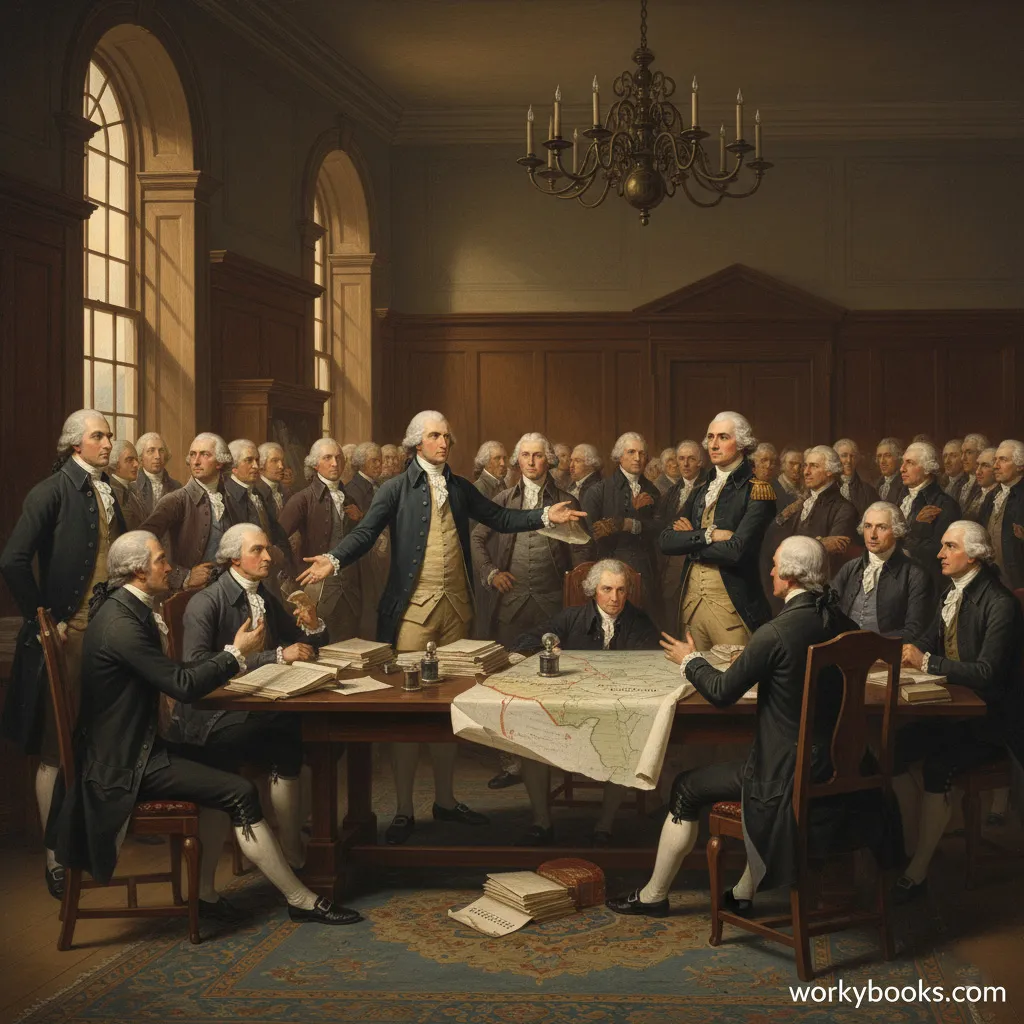
The Boston Tea Party and the Intolerable Acts that followed pushed the American colonies closer to revolution. In September 1774, representatives from twelve colonies met at the First Continental Congress to plan their response to British actions.
The Congress decided to boycott British goods and train militias in case of war. Just a few months later, in April 1775, the first battles of the American Revolution occurred at Lexington and Concord. The Boston Tea Party had set in motion events that would lead to American independence.
Key Outcomes
- United the colonies against a common enemy
- Led to the First Continental Congress in 1774
- Increased military preparations by both sides
- Set the stage for the American Revolution (1775-1783)
Boston Tea Party Quiz
Test your knowledge about the Boston Tea Party! Answer all 5 questions to see how much you've learned.
Frequently Asked Questions
Here are answers to common questions about the Boston Tea Party:
Boston Tea Party Trivia
Discover amazing facts about the Boston Tea Party!
Cost of the Tea
The 342 chests of tea destroyed would be worth about $1.7 million in today's money. The British East India Company lost a fortune!
Secret Identities
Most participants in the Boston Tea Party kept their involvement secret for years. Some never revealed they had taken part, even to their families.
Types of Tea
The destroyed tea included 240 chests of black tea, 60 of green tea, and 15 of a mix called "congou." All were high-quality varieties.
Modern Reenactments
Every year on December 16, the Boston Tea Party Ships & Museum holds a reenactment where "tea" is thrown into the harbor to commemorate the event.


